Capsicum Frutescens, commonly named ‘chilli,’ is one of the most widely consumed vegetables. It is used in almost all the cuisines in India. This is because they add spice to the food. Coming from the capsicum family, chillies contain a chemical called capsaicin, which is the reason for the spiciness. Let’s check out the best practices to grow Green Chilli (Mirchi) below.
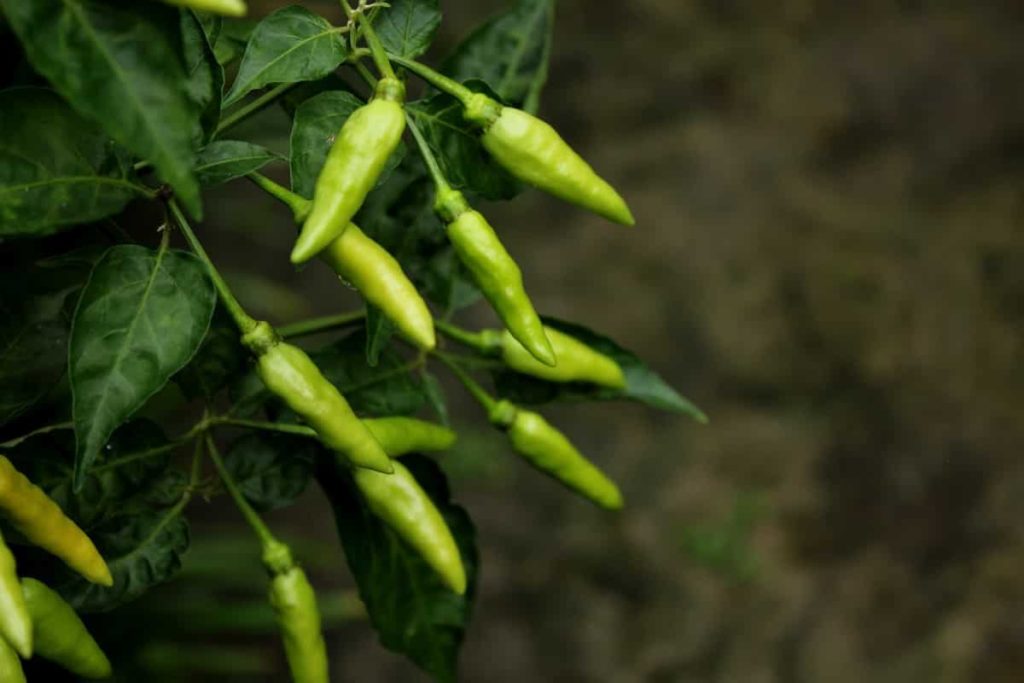
- Though different varieties of chilli exist, green chilli is extensively farmed. Surprisingly, green chillies are also used in beverages and medicine production.
- Chilli farming is prominently done in Mexico, which cultivates the spiciest variant of chillies. However, as per the latest information available, India is the top producer of chillies crossing the countries China, Spain, and Peru.
- The popular variety of India, known as Guntur Mirchi, is produced in Andhra Pradesh and is the most running business in the state.
- Chilli cultivation is carried out throughout the year and in all states of India. Though not recommended to be consumed raw, chillies are healthy as they are rich in nutrients and can help prevent cardiac arrest and chronic diseases.
- In addition, they are rich in vitamin K and can be used to reduce inflammation.
- The richness of vitamin C and antioxidants can strengthen the body’s immune system.
Chilli cultivation is one of the most profitable businesses in India and other Asian countries. If not as a business, people also grow chilli on their farms. Below are some of the common queries about farming green chilli at home.
Best practices to grow Green Chilli (Mirchi)
Can I grow green chilli at home?
- Yes, chillies are cultivable at home, provided the ideal weather conditioning is done along with nurturing.
- Chilli does not require any complicated arrangements. It is simple to grow and even grow in small pots and containers. Chilli plants can be added to the kitchen garden.
In case you missed it: Chilli Cultivation Information Guide
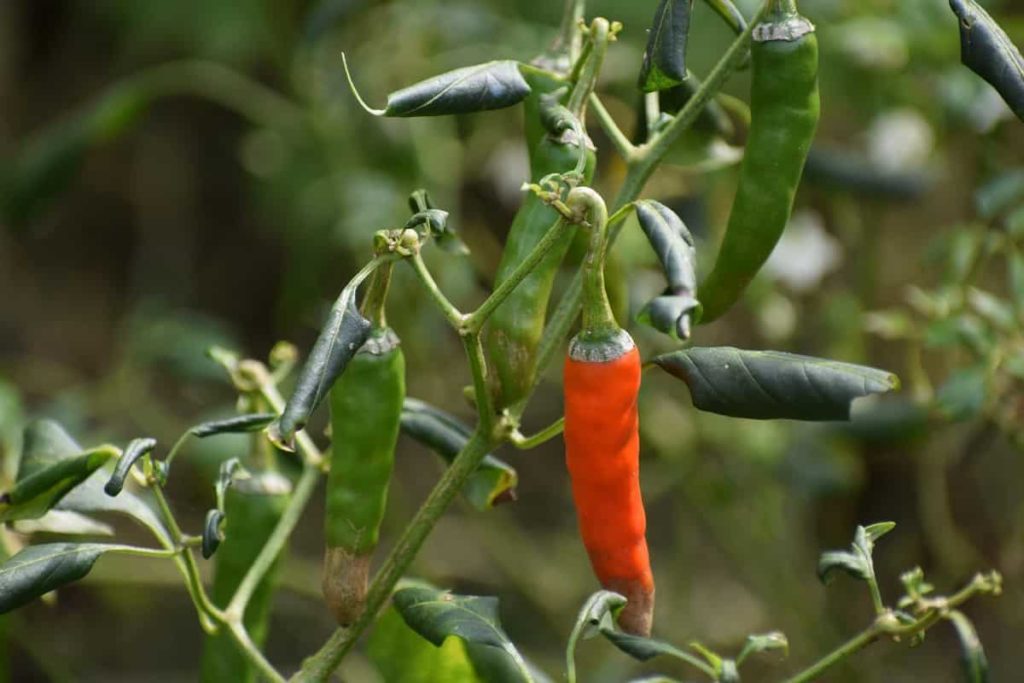
How long does it take for green chillies to grow?
- Generally, chillies are expected to yield 10-14 weeks after seeds are sown. However, this is only when the influencing factors like soil conditions, watering, and manure are taken care of.
- Chilli seeds are planted in soil rich in nutrients and have good water retention capability. However, chillies require a lot of water to grow.
- The time taken for the crop to grow to the harvesting stage varies from place to place due to temperature variations.
Is green chilli farming profitable?
- Green chilli tops the list of commercial crops in India. Its consumption is so high that it stays in continuous demand irrespective of the season or market conditions.
- Chilli requires comparatively significantly less space than other crops. Therefore, one can cultivate more chilli in the same room than other crops.
- Green chilli holds a continuous domestic market which is why farmers prefer chilli farming even though it requires a more significant initial investment.
In which month chilli is grown?
- Chilli can be grown in both Kharif and rabi crop seasons. However, the harvesting takes 14 weeks from the time of seed sowing, so the month of plantation is decided.
- In general, chilli seeds are sown in May and June as chilli plants require adequate exposure to sunlight with heated temperatures.
- If the cultivation is planned as a rabi crop, seeds are sown in September or early October.
- In case of greater demand, which is quite common, the seeds are sown in the time of late January or early February. Then, while harvesting, the conditions would be just right enough for the crop to yield to its full potential.
What is the yield of green chilli per acre?
- A massive amount of 20 to 30 tons of green chilli produce can be obtained per acre if the conditions are maintained ideally. Andhra Pradesh tops the list being the highest producer of chilli in India.
- The average yield per green chilli plant ranges between 1.5 to 2.5 kgs. This shows how profitable the business can be if one can manage the investment and nurture the crop.
- Depending upon the number of times harvesting is done, the yield can be greater than 20 tons per acre.
- The final yield can differ with varying local conditions and cultivated green chili varieties. The variant in Andhra Pradesh is the most yielding kind, followed by the states of Kerala, Kashmir, Gujrat, etc.
In case you missed it: Black Pepper Cultivation Information Guide
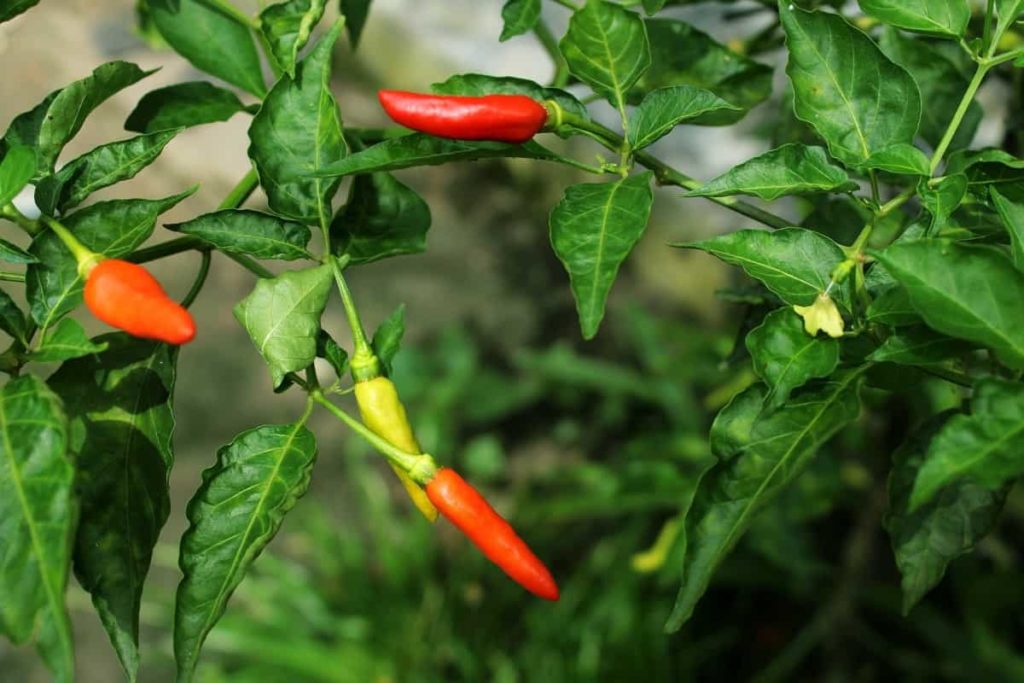
How many times chilli can be harvested?
Chilli plants require at least 75 days before harvest. Therefore, harvesting can be done at least thrice a year. The first two harvests yield green chilli, and later harvests yield ripen red fruits. Thus, depending upon the variety of chilli cultivated, the number of crops can either increase or decrease.
How can I grow green chilli at home?
The process of cultivating green chilli at home is simple. Below is the step-wise procedure for growing green chilli at home.
- Any cultivation begins with selecting the right site to grow the plant. For green chilli, the location should be such that the temperatures are neither too hot nor too cold for the plant to germinate and thrive. Ideally, places with moderate climates throughout the year are preferred. The optimal temperature ranges from 18-25 centigrade, hitting 30-32 centigrade at the maximum.
- After the site is selected, the next step is to obtain quality seeds. Seeds are mostly purchased from trusted seed vendors. Experts usually transplant already germinated seeds directly into the soil to yield quickly.
- Soil needs to be tested and prepared most suitably before sowing seeds. Green chilli requires organic soil ranging from a pH level of 6.3-7, with an excellent capacity to retain and drain excess water. The seeds can die even before germinating from water overdose.
- Seeds are sown a quarter inch deep into the soil with a spacing of 3-4 inches between each row. The implanted seeds are covered well with soil. If the seeds are sown in pots, the soil is filled to at least one-foot height, and the pot must be at least 30 inches wide. For beginners, it is advisable to sow 2-3 seeds in one spot so that the healthiest of them can be selected for transplanting after germination.
- The seeds are watered regularly to keep the soil moist and supply enough water to initiate germination. However, care should be taken not to over-water the soil while sprouting the seed. A minimum of at least 6 hours of sunlight is required for the onset of germination. Germination usually takes 7-10 days from the day of sowing seeds.
- The germinated seeds are transplanted into rich soil beds where manure and organic compost are prepared for the growing seed to yield its full potential. At this stage, weather conditions are essential. Hot and humid conditions with dry air are best suitable for the cultivation period of close to 3 months.
- Green chilli is a crop that takes a lot of water to grow. Hence, frequent watering in adequate quantities is necessary to keep the plant healthy and growing. A minimum of 1.5-2 inches above the soil level for potted plants is a must. Also, make sure you do not overdose on the plant.
- One can expect the plant to yield after 75-90 days by maintaining ideal conditions. This, again, depends on various factors and can vary from country to country. The Mediterranean region countries produce most chilli, and the time taken to yield till harvest is mainly 10-13 weeks.
- On average, one chilli plant can give 1.5-2 kilos of green chilli during the first harvest. Chili plants can be harvested thrice for a season, provided the soil is maintained healthy without any crop-eating worm or pests spoiling fertility.
In case you missed it: Capsicum Cultivation (Bell Pepper) Information Guide
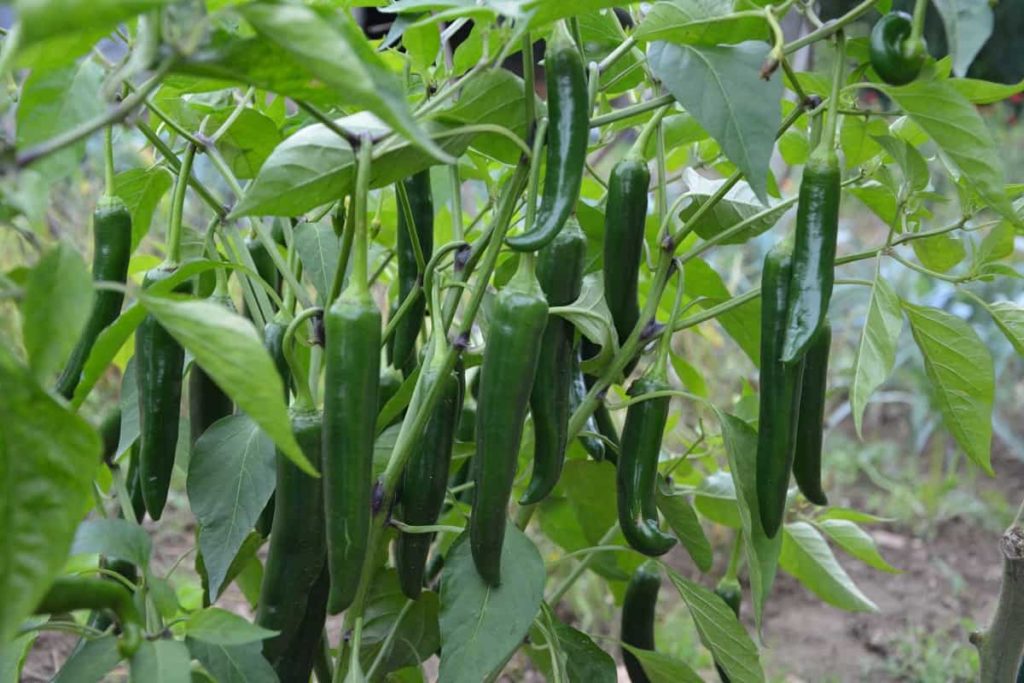
How many chilli plants can be planted per acre?
- Chilli plants are best suited for cultivators with a small area. The reason is that chilli plants require surprisingly less space to grow and thrive. In one acre, we can plant 19750 to 22200 seedlings easily.
- The number of plants depends upon the factors like the number of harvests intended on the crop, soil conditions, spacing between the seeds, and permissible plant height.
How can I increase my chilli production?
- Chilli plants naturally yield a lot more than other commercial crops. However, conditions can sometimes be tricky, and extra production may be required. The following steps measures can be employed for better and increased productivity.
- The manure or fertilizer used on the soil can impact the production capacity of the soil. Artificial fertilizers can make the crop yield quicker, but productivity is always higher when natural manure and compost are used.
- The seeds are sown in the soil for germinating. At this stage, usually, dry grains are planted. However, for better productivity, one can soak the seeds in water for 10-20 mins before sowing. This helps initiate seed growth even before they are sown in the ground.
- Other than these measures, one can also try planting two or more seeds in one place to combine them for multiplied produce. Using hybrid variants of seeds can also increase production, but at the same time, they can harm the fertility of the soil.
In case you missed it: Best Practices to Grow Spinach/Palak at Home: Check How this Guide Helps Beginners
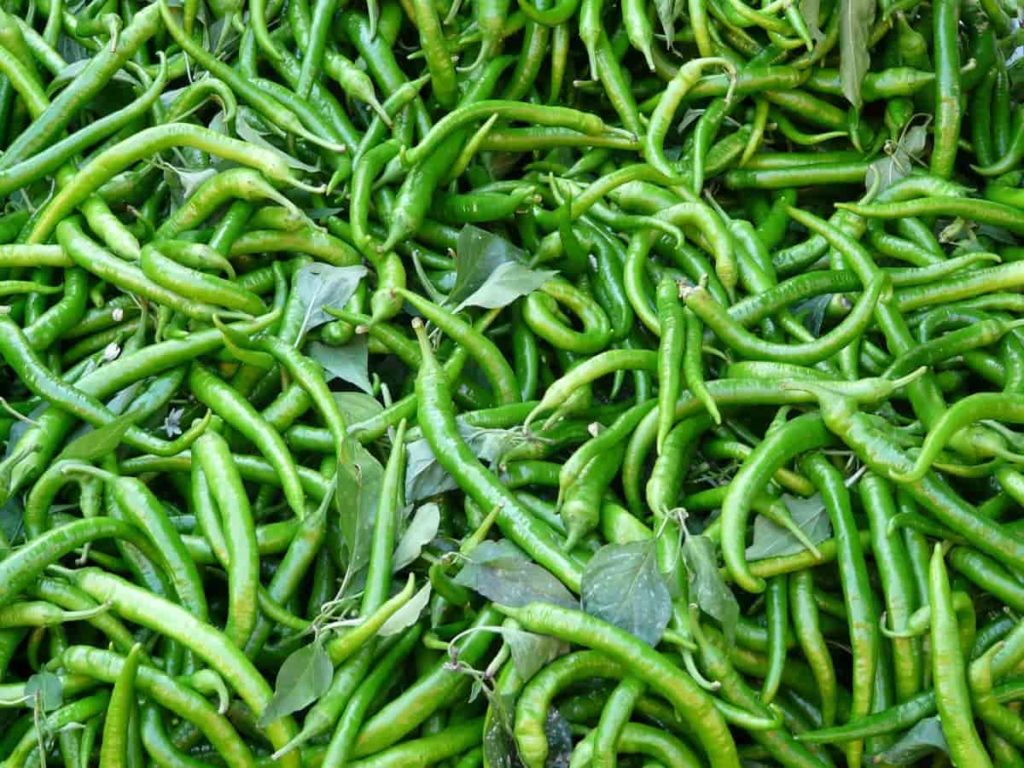
How long does a chilli plant live?
Chilli plants usually survive for 1.5-2.5 years when the soil is healthy and fertile with natural manure. This can be due to climatic conditions, geographic location, and water availability. The longest a chilli plant survives in the hot and humid conditions of Texas, Florida and Arizona, for as long as 40-55 years. In Indian conditions, chilli plants usually survive for 2-2.5 years.
Do chilli plants regrow every year?
- Most people are unaware that chilli plants can regrow from the point where they are cut, making them a perennial crop. All the crop needs to survive through the year is little attention and care, along with nourishment with natural composts and manure.
- The point of regrowth lies below the one-third height of the plant from ground level, and care is to be taken while harvesting not to cut the plant below this point, or the plant would lose its capacity to regrow.
What manure and fertilizers are required for chilli growth?
- Chilli plants mostly require natural manure and compost to grow healthy and survive. Even then, fertilizers are essential in making the soil and manure more fertile and aid in better production.
- Farm Yard Manure is supplied to the soil in a quantity of 10-11 tonnes per hectare at the time of soil preparation. Other than this, if the crop is sown in rainy conditions, Nitrogen and Phosphorous are supplied in a mixture of 2:1 at the time of transplanting.
- After this stage, an equal ratio of nitrogen and phosphorous is supplied during the 4th, 11th, and 13th weeks of cultivation.
In case you missed it: Best Practices to Grow Okra at Home: Check How this Guide Helps Beginners
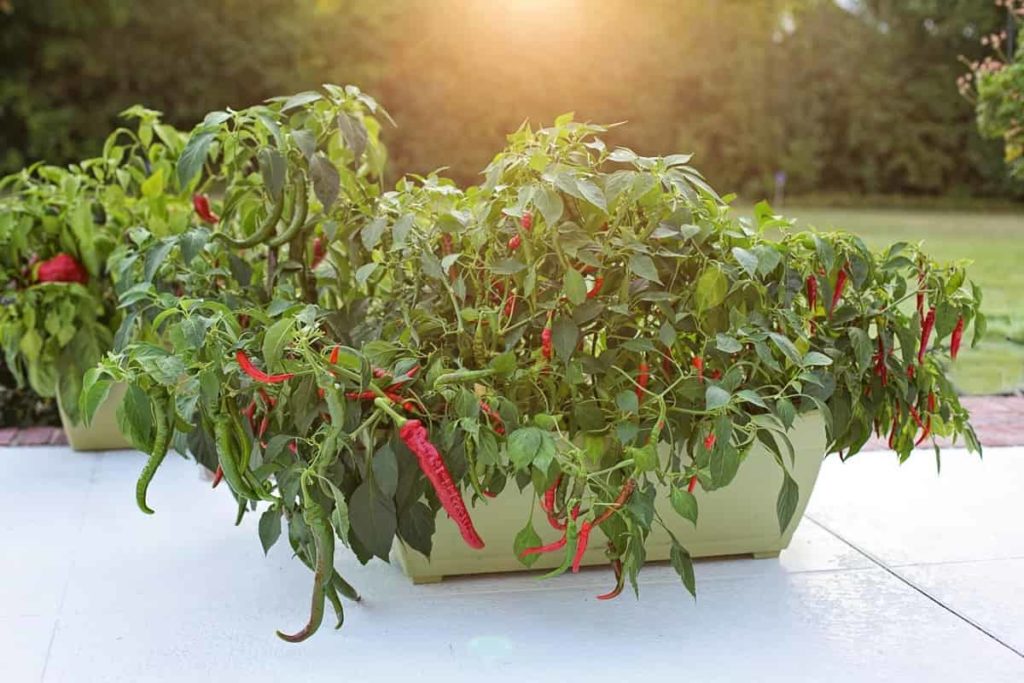
Conclusion
- Green chillies are the most cultivated commercial crops in India. Even though they are not consumed in their naturally available form, chillies find a lot of use in preparing sauces as a culinary item.
- Chilli is not only a food item but is also a prominent ingredient in some medicine. Even the flakes of chillies are flavored and used as add-ons on food like pizza, etc. Chilli business is also well-known in countries other than India like Japan, Florida, Spain and Mexico.
- The Indian variant of green chilli is locally known as Hari Mirchi, Hari meaning ‘green.’
- These are some of the common queries on harvesting green chilli at home.
- Sheep Farming Business Plan for Beginners
- Aquaponic Farming at Home: A Step-By-Step Guide
- Profitable Village Farming Business Ideas in 2024
- High-Yield Aquaculture: Fast-Growing Fish for Farming
- Effective Fish Pond Construction Techniques for Beginners
- Irrigation and Water Management in Pineapple Farming
- Blossom to Harvest: Mastering Flowering and Pollination in Papaya Farming
- Pig Fattening Essentials: From Selection to Sale for Beginners
- Raising Wagyu Cattle: A Complete Guide for Premium Beef Production
- Soil Types and Their Water Holding Capacity
- Optimizing Irrigation Schedules for Coconut Groves for Enhanced Yield
- Espresso Your Garden: Coffee Grounds for Healthier Acid-Loving Plants
- The Best Soil Mix for Snake Plants: How to Mix Your Own Snake Plant Soil
- Green Thumb Success: Expert Tips for Cultivating Greenhouse Beans All Year Round
- Bloom All Year Round: The Ultimate Guide to Indoor Hyacinth Care
- Eco-Friendly Gardening: How to Make Liquid Fertilizer from Kitchen Waste
- Ultimate Guide to Grow Anise in Pots: Explore Seed Propagation to Harvesting
- Guide to Raising Chester White Pigs: Discover Breed Facts to Growth Management
- Mastering the Elegance: The Ultimate Guide to Weeping Cherry Tree Care, Planting, and Maintenance
- Ultimate Guide to Planting Garlic in Grow Bags: Growing Strategies for Beginners
- How to Fix Spider Plant Leaf-Related Problems: Natural and Organic Remedies
- 10 Reasons Why Your Tulsi Plant is Shedding Leaves: Home Remedies and Solutions
- Optimizing Growth and Yield: The Advantages of Palm Bunch Ash Fertilizer
- Utilizing Neem Oil Extract as a Natural Pesticide for Hydrangea
- From Soil to Harvest: Various Ways in Which Farmers Can Use AI Tools
- Steps to Encourage and Induce Citrus Flowers: A Comprehensive Guide
- How to Fix Snake Plant Leaf-Related Issues: Natural and Organic Remedies
- Transform Your Garden into a Fragrant Oasis with Raat Ki Rani (Night Blooming Jasmine)
- Discover the Ideal Chicken Breeds for Philippine Farms
- How to Create a Poultry Egg Farm Business Plan for Profits
- Grow Lemon Cucumbers Like a Pro: Insider Techniques for Bountiful Yields
- Ultimate Guide to Caring for Your Pink Princess Philodendron: Tips for Thriving Variegation
- Areca Nut Profit Per Acre: Calculating Yield and Cost of Cultivation
- How Kaveri Chicken is Becoming a More Profitable Breed in Indian Backyards
- Transform Your Barn: 9 Steps to Convert a Horse Stall into a Chicken Coop
- Exploring Suffolk Sheep Disadvantages with Limitations and Challenges
